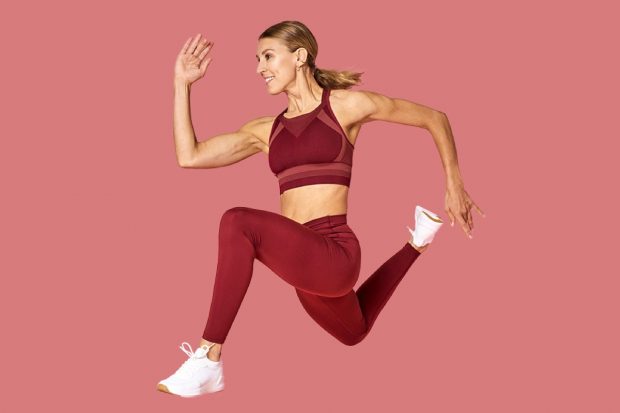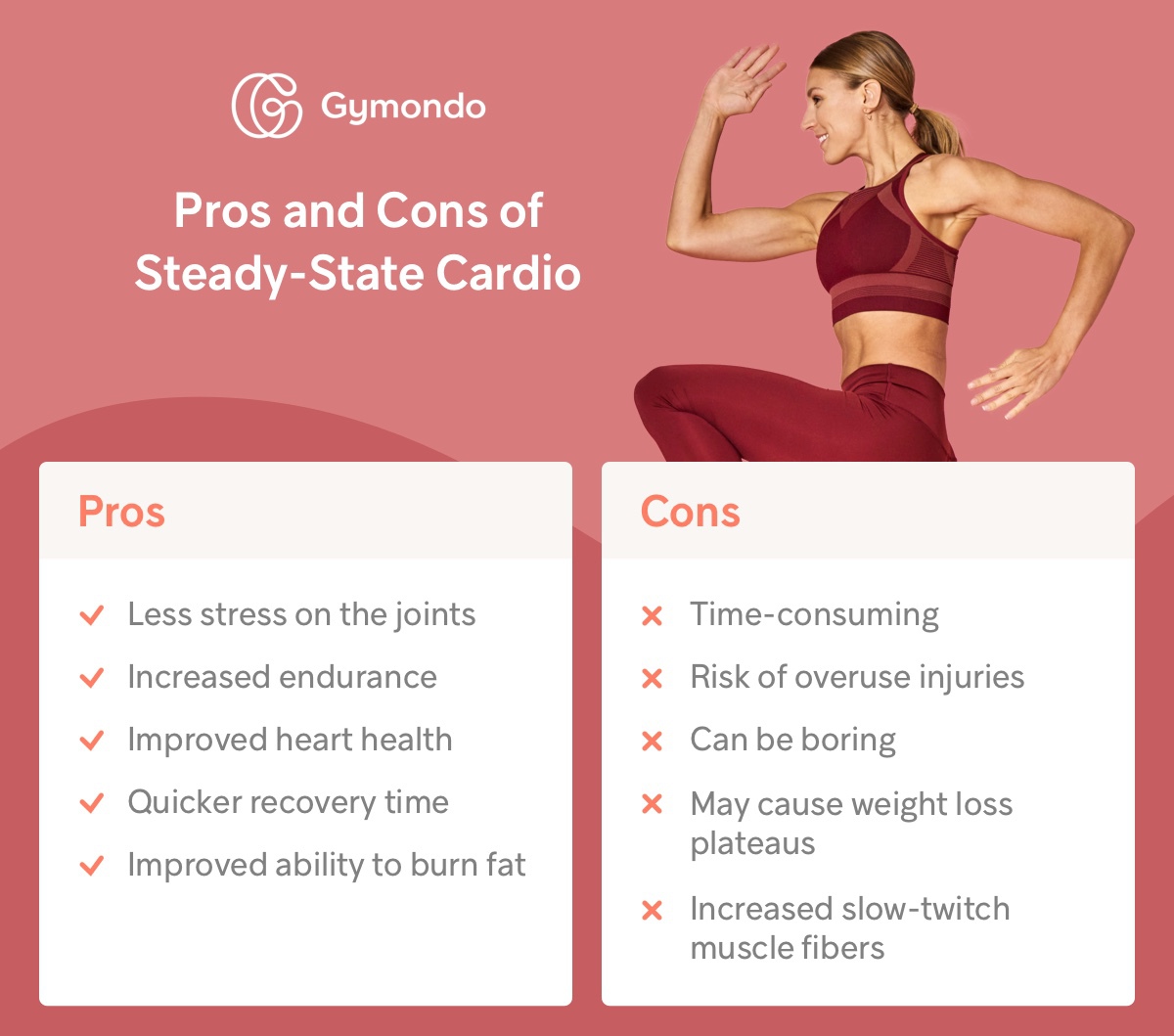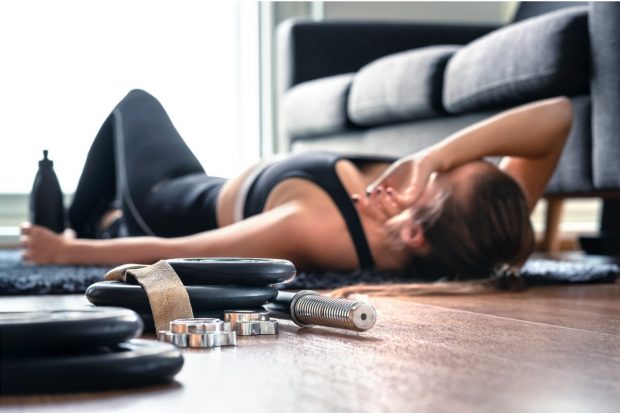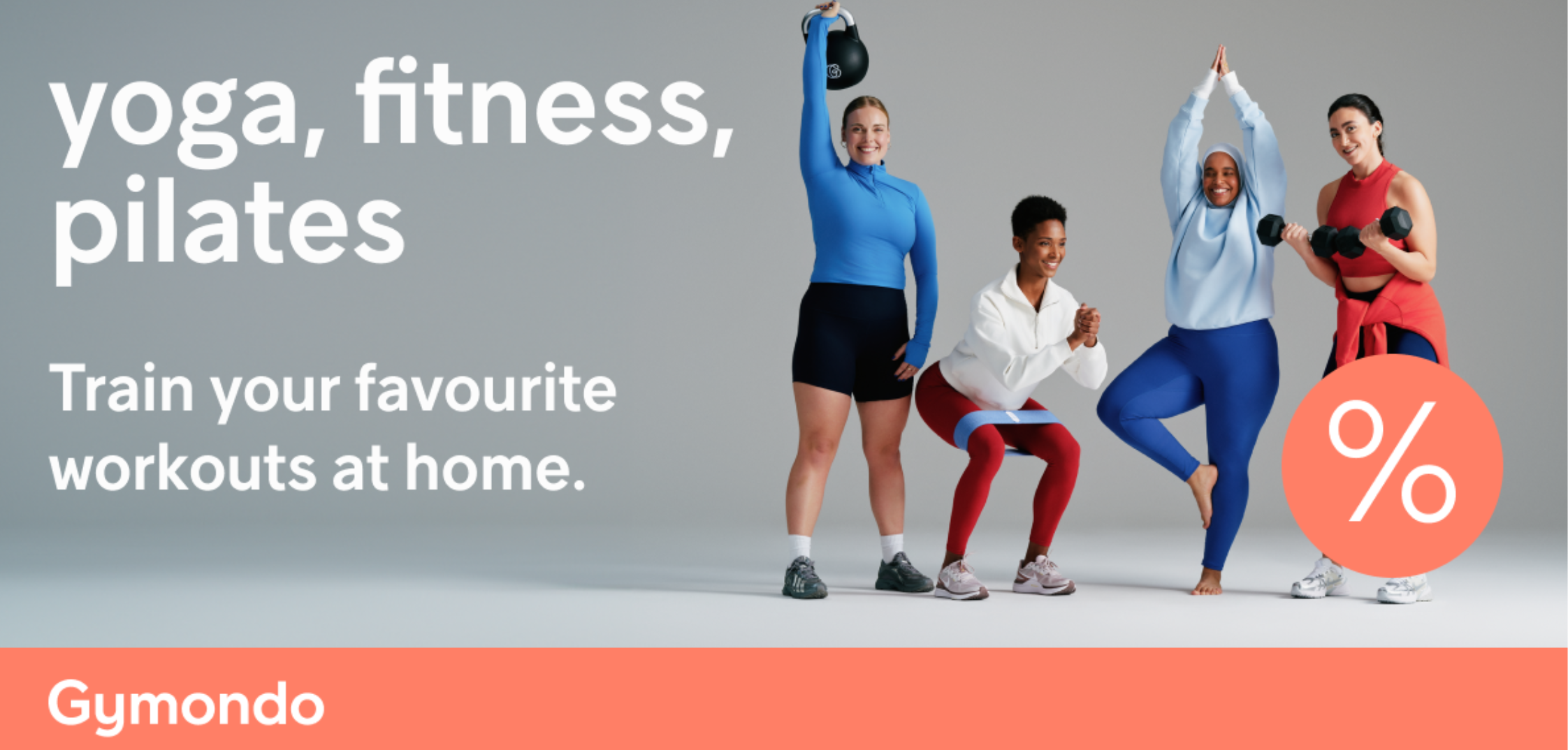Have you hit a plateau in your weight loss journey? If you’ve been solely focused on steady-state cardio, the cons may outweigh the pros.

Once you’ve tried high-intensity interval training (HIIT), it’s hard to remember that other training methods exist. As it turns out, HIIT happens to be ideal for burning maximal calories and fat in minimal time. Upon realizing this, it’s pretty hard to turn to anything else.
Related: HIIT: Burn Fat, Build Lean Muscle and Transform Your Body
But solely focusing on HIIT while ignoring longer, lower-intensity training may actually sabotage your fitness goals, regardless of whether they’re focused on weight loss or strength gains.
Steady-state cardio—lower-intensity exercise—refers to any activity that results in a relatively stable heart rate and oxygen consumption. Think walking, jogging, rowing or elliptical training. The key to successful steady-state cardio is to get your heart rate to a fat-burning level, ideally around 135 to 145 beats per minute for most people. This means around a difficulty level of 6 on a scale of 1 to 10.
While steady-state cardio may have its place in your weekly workout routine, it still comes with some downfalls. Here’s all you need to know about steady-state cardio and how it impacts your health.
Pros and Cons of Steady-State Cardio

Pros
Less Stress on the Joints

If you’re concerned that steady-state cardio will wreck your knees, you can rest easy. A recent study suggests that people of normal weight with healthy joints can actually strengthen their knees and joints through moderate jogging. Because you’re working at a lower intensity, it’s way easier on your joints than HIIT.
Increased Endurance

Longer, slower-paced exercise builds both cardiovascular and muscle endurance. Over time, training your body through steady-state exercise will increase your body’s capacity to do work for longer periods of duration.
When doing HIIT workouts, you may notice you reach your limit much quicker. With steady-state cardio, you’re able to push much longer before your energy levels are depleted.
As you continue to train in a steady-state, the mitochondria—parts of your cells that mediate respiration and energy production—grow in number and size. This increases your muscles’ capacity to utilize oxygen. Additionally, your heart will become stronger and better equipped to power through long bouts of physical activity.
Improved Heart Health

One of the main benefits of steady-state cardio is strengthening your heart so that it becomes more efficient at doing its job. Your lungs pull oxygen in from the air you breathe and place it in the bloodstream. The heart is responsible for pumping oxygenated blood through the body to the working muscles. Maintaining a steady-state helps your body become more efficient at pumping oxygenated blood to your working muscles and moves deoxygenated blood back to the lungs for removal as carbon-dioxide.
Quicker Recovery Time

Steady-state cardio puts less stress on your body, making recovery periods shorter. Due to lower intensities, your body will remove metabolic waste and repair muscle tissue more quickly. Even if you’re mildly sore the day after a steady-state workout, you can easily complete your next training session pain-free.
Improved Ability to Burn Fat

The longer you train in a steady-state, the more you dip into your fat stores. At lower intensities, your body metabolizes fat as the primary source of fuel. On the other hand, at higher intensities, the body relies on carbohydrates as the main energy source and won’t dip into your fat stores until all carbs are depleted. Training at a lower intensity uses the aerobic energy pathway, which helps the body become more efficient at lipolysis—the breakdown of fatty acids (lipids) into energy.
Cons
Time-Consuming

If your goal is to lose weight, you’ll have to train for longer periods of time to burn enough calories. Research suggests HIIT burns more calories than steady-state cardio. In a 20-minute timeframe, you could burn up to 273 calories in a HIIT class compared to just 150 calories expended by steady-state activities.
Related: 3 Bodyweight Workouts That Burn More Calories Than Running
Risk of Overuse Injuries

Repeating the same motions over and over again can lead to repetitive stress injuries. To reduce the likelihood of overuse injuries, it’s important to incorporate a wide variety of training methods into your weekly routine. For example, mix strength training with HIIT and steady-state cardio to remain injury-free.
Can Be Boring
Nothing gets more boring than logging in 5 km a day on the treadmill, stationary bike or elliptical trainer. And let’s face it, not everyone’s cut out for long, slow workouts, especially when Mother Nature refuses to cooperate. These kinds of workouts can get boring and feel tedious if you repeat them day in and day out. Switch things up to eliminate boredom!
May Cause Weight Loss Plateaus

Doing only steady-state cardio workouts without changing things up eventually leads to weight loss plateaus. Your body adapts to any type of training that you’re doing and will eventually stop responding to workouts in the same way. To ensure your body doesn’t adapt to a particular training method, you must challenge it in new ways through various activities. This will keep your body constantly guessing to ward off exercise adaptation.
Increased Slow-Twitch Muscle Fibers

While some may disagree that an increase in slow-twitch muscle fibers is a bad thing, there are some disadvantages. Slow-twitch muscle fibers (Type I) generate less power and strength than fast-twitch fibers. This ultimately puts you at a disadvantage when engaging in weight training and HIIT workouts, which both require power and strength. On the other hand, slow-twitch muscle fibers help you sustain activity for longer durations, making them great for marathon runners.
To ensure you target slow-twitch and fast-twitch muscle fibers, it’s important to incorporate both steady-state cardio and strength training into your workout regime. Target your fast-twitch muscles with low-repetition training to boost your maximal strength. Also, add power exercises—plyo lunges, jump squats—to your routine and perform high-intensity intervals with less than 15 seconds of work followed by short rest intervals.
No Matter Your Goal, Train Your Body in Different Ways
Whether your goal is to lose weight or you’re gearing up for a marathon, combining strength training, HIIT and steady-state cardio workouts is the best way to keep challenging your muscles and improving your fitness. Too much of any workout can lead to overuse injuries, boredom and burnout.
By incorporating various training styles into your weekly fitness regime, you’ll train your cardiovascular system to work efficiently at all levels of intensity, maximize calorie and fat burn and increase your overall performance.
If you’re ready to get past your weight loss plateau, try Gymondo’s HIIT, strength training and cardio programs. Lose weight, burn fat, build lean muscle and transform how you look and feel.




Kommentar schreiben